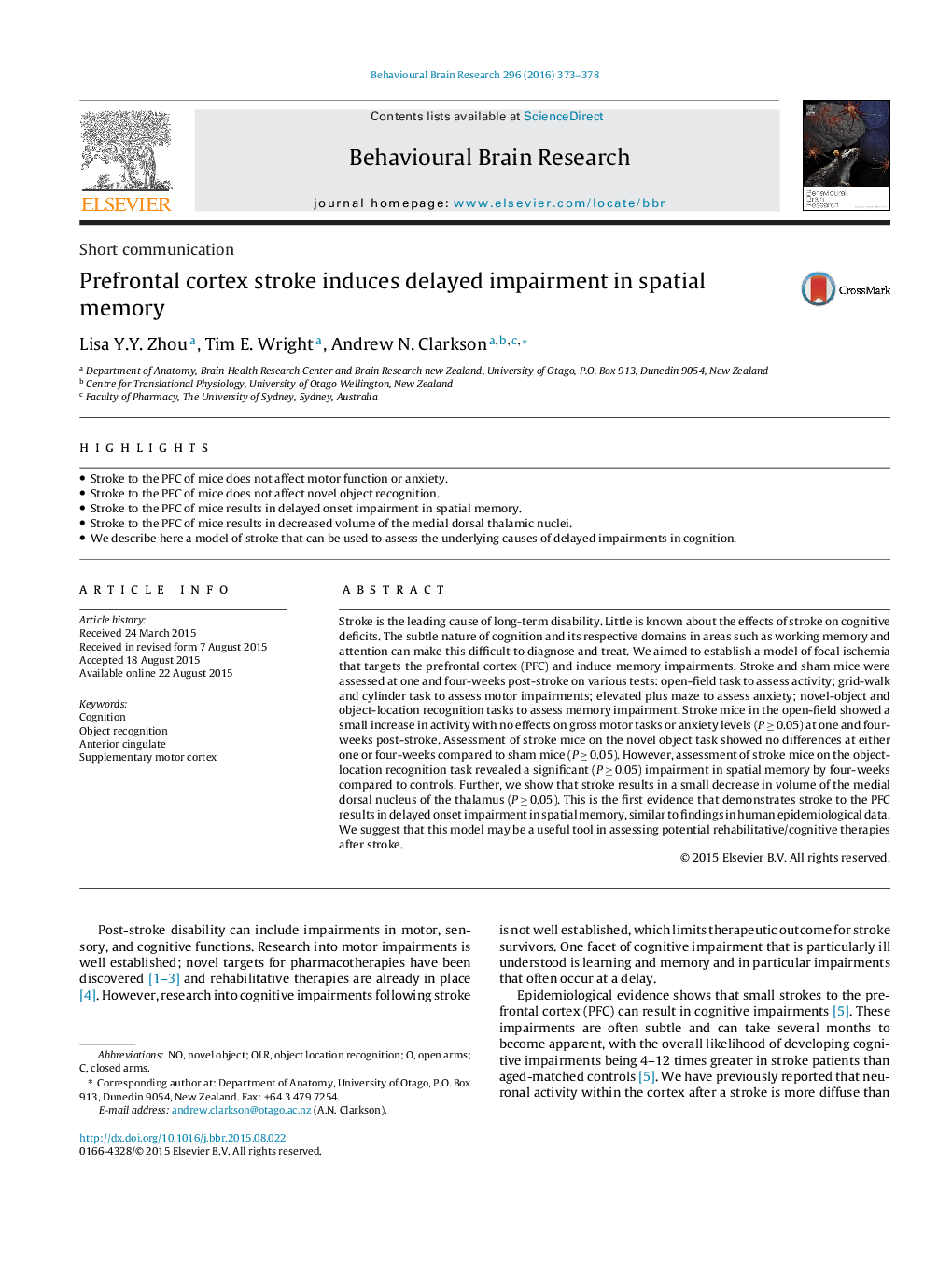| Article ID | Journal | Published Year | Pages | File Type |
|---|---|---|---|---|
| 4312366 | Behavioural Brain Research | 2016 | 6 Pages |
•Stroke to the PFC of mice does not affect motor function or anxiety.•Stroke to the PFC of mice does not affect novel object recognition.•Stroke to the PFC of mice results in delayed onset impairment in spatial memory.•Stroke to the PFC of mice results in decreased volume of the medial dorsal thalamic nuclei.•We describe here a model of stroke that can be used to assess the underlying causes of delayed impairments in cognition.
Stroke is the leading cause of long-term disability. Little is known about the effects of stroke on cognitive deficits. The subtle nature of cognition and its respective domains in areas such as working memory and attention can make this difficult to diagnose and treat. We aimed to establish a model of focal ischemia that targets the prefrontal cortex (PFC) and induce memory impairments. Stroke and sham mice were assessed at one and four-weeks post-stroke on various tests: open-field task to assess activity; grid-walk and cylinder task to assess motor impairments; elevated plus maze to assess anxiety; novel-object and object-location recognition tasks to assess memory impairment. Stroke mice in the open-field showed a small increase in activity with no effects on gross motor tasks or anxiety levels (P ≥ 0.05) at one and four-weeks post-stroke. Assessment of stroke mice on the novel object task showed no differences at either one or four-weeks compared to sham mice (P ≥ 0.05). However, assessment of stroke mice on the object-location recognition task revealed a significant (P ≥ 0.05) impairment in spatial memory by four-weeks compared to controls. Further, we show that stroke results in a small decrease in volume of the medial dorsal nucleus of the thalamus (P ≥ 0.05). This is the first evidence that demonstrates stroke to the PFC results in delayed onset impairment in spatial memory, similar to findings in human epidemiological data. We suggest that this model may be a useful tool in assessing potential rehabilitative/cognitive therapies after stroke.
